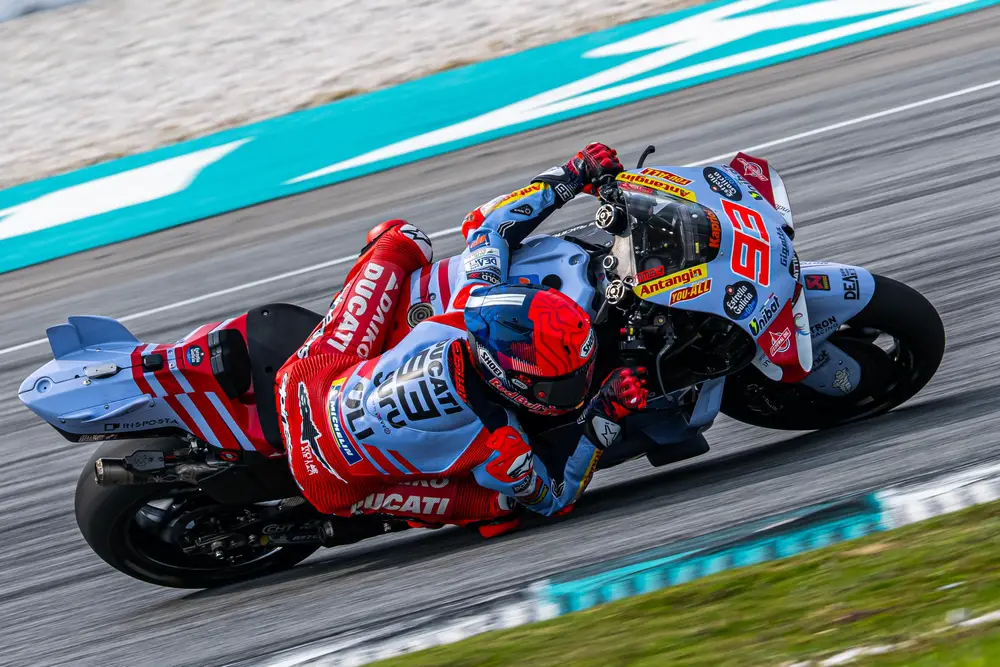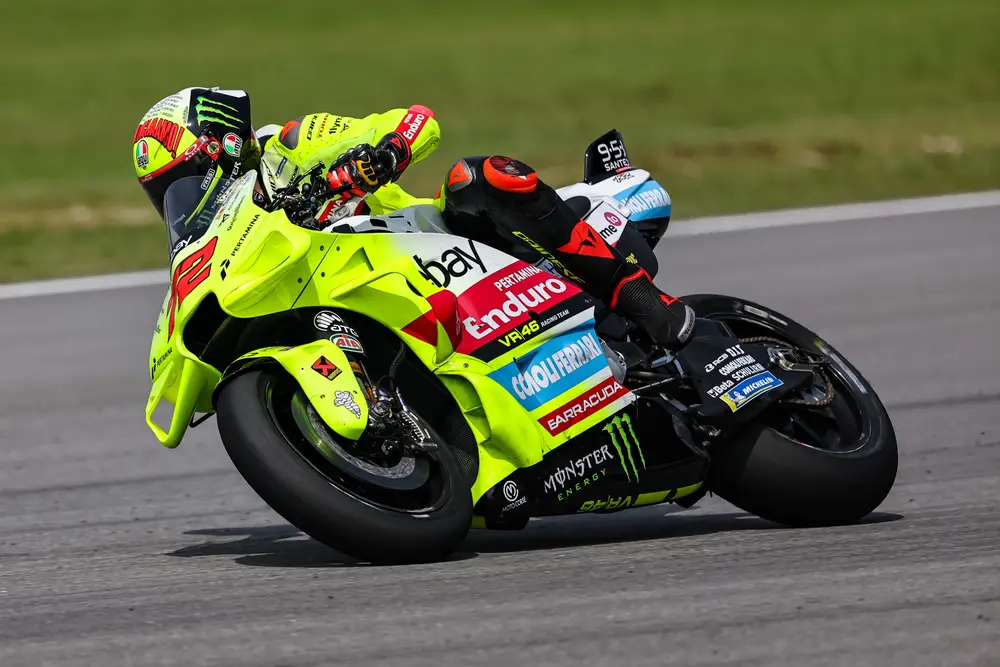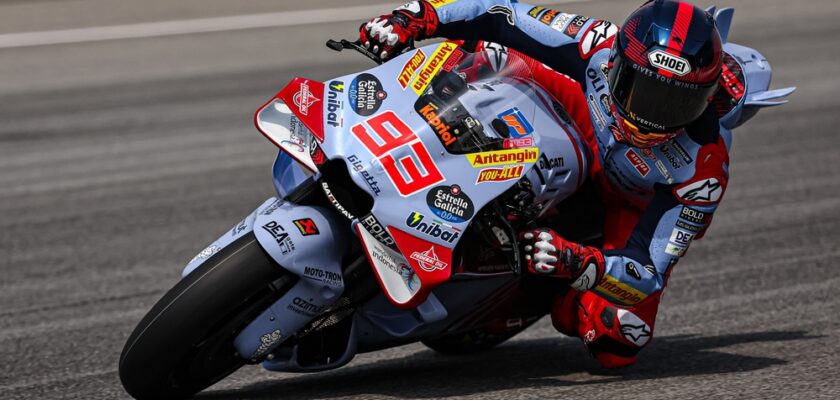The MotoGP, the world’s leading motorcycle racing category, exploits speed, skill and lots of technology. Its races attract millions of spectators from all over the world, which is why they need to guarantee the safety of the riders and the fairness of the competitions.
To do this, a strict set of rules and regulations is applied in the category, and these standards involve every aspect of the competition, from the technical specifications of the bikes to the behavior of the riders on the track.
Understanding the rules of MotoGP is essential not only for competitors, but also for fans who want to enjoy the sport in its entirety. That’s why we’ve brought you special content explaining the main rules of MotoGP!
In this article, we’ll give you a broader view of the sport’s technical specifications, racing procedures, conduct regulations and other factors that define this exciting world! So check out the rules of MotoGP!
Open your Betano account and get up to 1,000 reais in bonuses.
PIX payments, live games and super odds!Click here to open your account!

MotoGP rules: complete list
- Motorcycles
- Fuel and lubricants
- Practice and qualifying
- Start
- Penalties and infractions
- Behavior on the track
- Safety equipment
- Communication with the team
MotoGP rules: motorcycles
The bikes used in MotoGP are highly sophisticated and specific, designed to offer maximum performance and safety.
Motorcycles in the MotoGP premier class must have 1000cc four-cylinder engines, and can be either two-stroke or four-stroke. Currently, all teams use four-stroke engines due to their superior performance.
Engine capacity is a highly regulated area in MotoGP, as this ensures that all teams can compete on a level playing field.
The minimum weight of a motorcycle in MotoGP is 157 kg. This rule is crucial to ensure that no team has an unfair advantage by using lighter bikes, which would be more agile and faster in corners.
MotoGP rules: fuel and lubricants
The types of fuel and lubricants used are also regulated. The fuel must be single-specification petrol supplied by the championship organizer. In addition, there are limits on the amount of fuel that can be used during a race, with a maximum of 22 liters allowed.
MotoGP rules: practice and qualifying
The MotoGP race weekend begins with several practice sessions, followed by qualifying sessions. In free practice, the riders adjust their bikes and familiarize themselves with the track.
Qualifying will determine the starting position for the main race, which is divided into two parts: Q1 and Q2.
The fastest riders in free practice go straight through to Q2, while the others compete in Q1 to try and secure a position in Q2.
MotoGP rules: start
The start in MotoGP is critical and follows a very strict procedure. Riders must line up in the order determined by qualifying, and any infraction at the start, such as an early move, can result in penalties.
MotoGP rules: penalties and infractions
There are various penalties that can be applied for infractions during the race. These include time penalties, long laps (when the driver must take a longer alternative route), and even disqualification in serious cases. Here are the main ones:
- Overtaking under a yellow flag
- Exceeding track limits
- Unsportsmanlike conduct
- Ignoring flags and stewards’ signals
- Failing to comply with the start rules
- Speeding in the pit lane
The penalties that can be applied are as follows:
- Time penalty: additional race time for the driver at the end of the competition.
- Position penalty: the driver may be forced to give up a position or more if maneuvers are deemed improper or dangerous.
- Ride-through: the driver must pass through the pits without stopping, usually as punishment for less serious infractions.
- Pit lane: this is when the driver is forced to enter the pits and stop for a specified period of time.
- Time loss: this penalty consists of forcing the driver to slow down temporarily to compensate for an advantage gained irregularly.
- Warning: is a formal warning given to the driver about improper behavior or action, which can result in more severe penalties if repeated.
- Cancellation of fast lap: if a rider exceeds the track limits during their fast lap, it can be canceled.
- Disqualification: in serious or repeated cases of infractions, a rider may be disqualified from the race.
MotoGP rules: behavior on the track
In addition to the rules listed above, riders are obliged to ride safely and fairly. Therefore, dangerous maneuvers, such as intentionally blocking another rider or driving irresponsibly, are severely penalized.

MotoGP rules: safety equipment
- Helmet
- Leather overalls
- Gloves
- Boots
- Back protector
- Chest protector
- Neck protector
- Goggles or visor
- Ear protectors
All riders must wear approved safety equipment, including helmets, protective clothing, boots and gloves. This equipment must meet specific safety standards to protect riders in the event of an accident.
Find out more about the equipment:
Helmet
A high-tech helmet is essential to protect the rider’s head in the event of an accident. They are designed to be lightweight, aerodynamic and offer good ventilation.
Leather overalls
In MotoGP, the overalls worn by riders are made of high-quality, resistant leather. It offers protection against abrasion in the event of a crash and has inserts of composite materials for additional protection in critical areas such as elbows, shoulders and knees.
Gloves
Racing gloves are designed to provide grip and protection for riders’ hands. They are made of resistant materials, such as leather and kevlar, and have protections for the joints and palms.
Boots
MotoGP racing boots are robust and offer support for the ankles, heels and toes. They are made of resistant leather and have internal protections for the feet and ankles.
Spine protector
Many riders use a spine protector integrated into their overalls to protect the spine in the event of a fall.
Chest protector
Some riders also choose to wear a chest protector, especially in more dangerous racing conditions.
Neck protector
Neck protectors are crucial to help reduce impact, preventing neck injuries during accidents.
Glasses or visor
The helmet visor is designed to be impact-resistant and offer maximum clarity of vision in various light conditions. In addition, many riders wear goggles inside the helmet to protect their eyes from debris and insects.
Ear protectors
Earplugs are often used to protect riders from the intense noise generated by motorcycles during races, helping to preserve hearing in the long term.
MotoGP rules: communication with the team
During the race, communication between riders and their teams is allowed, but it must be done in a regulated manner. Use of radio devices, for example, is strictly controlled.
MotoGP rules
This is our special article on the main rules of MotoGP. If you liked the content, take advantage of the fact that you’ve come this far and keep exploring the site to find out more about the sport and the automotive world. Don’t forget to leave your comments, which are very welcome here!



